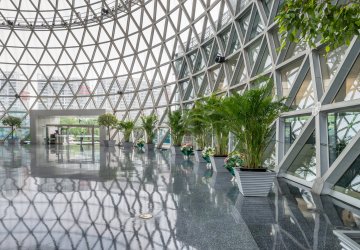We know the built environment contributes up to 34% of global greenhouse emissions. However, with the right data, we could better understand the carbon footprint of specific areas, such as utilities, HVAC systems, meeting rooms, and other building assets. Having a clear view into the performance of these areas would not only help organizations choose the best areas to make changes, but would support improving sustainability efforts and result in better ESG reporting.
But, where to start? Facilities management, of course!
Long before "ESG reporting” was a required function, facilities teams have been collecting data on building performance to help improve areas such as, energy efficiency, health & safety, and occupancy satisfaction. Therefore, FM is a great starting point for your organization to better understand the data you already have to get started with your sustainability initiatives.
Building connections between sustainability and facilities management
Unfortunately, an alignment between sustainability and facilities management is not always clear. This is due to many factors, but an easy one to point out is that many organizations don’t have the right solutions and digital tools in place to manage their data. This means they can’t fully provide a holistic overview of the data they produce, or effectively implement analytics tools that can turn that data into actionable insights to make a positive, environmental impact.
If you’re just starting out, you aren’t alone! In fact, around 30% of companies continue to employ outdated methods, such as spreadsheets, to collect and track resource and energy data. Conversely, a modern IWMS tool is able to regulate and standardize the data and processes within the built environment to make them consistent, reportable and improvable - in both environmental and social terms.
With the right data, facility managers can quantify energy efficiencies and waste to help support the improvement of their organization’s carbon footprint . For instance, IDC estimates that by 2024, the use of data and analytics will have enabled a 3% reduction in global CO2 emissions by the industrial and commercial sectors alone.
All aspects of sustainability
Sustainability initiatives should stretch beyond simply looking after the environment. For facility managers to meet all their ESG goals, they must consider environmental, social, and governance issues. Fortunately, having access to accurate, structured data can help with all three.
Occupancy levels, climatic conditions, and asset performance can all be measured. Using the data from these measurements helps you to ensure that employees have a work environment that allows them to perform at their best. And while improving employee satisfaction levels with data - a core objective for the modern facility manager - energy efficiency can also be enhanced. This represents a win-win!
Data is already being leveraged by many organizations to support their sustainability goals and boost employee morale. For example, a US furniture manufacturer was able to use Schneider Electric’s EcoStruxure Resource Advisor to monitor and track manufacturing and operating data to achieve a 27% reduction in energy consumed in manufacturing compared to the past decade.
The company was also able to reduce, recycle, or reuse 97% of its manufacturing waste, achieving zero waste-to-landfill status at nine sites to date. Examples of the ESG benefits stemming from more robust data usage are only likely to grow as the use of IoT devices, such as meters, sensors, and connected assets, in the built environment increases.
Today, data is hugely important to both sustainability and facilities management. In the future, it will be essential.
Want to learn more?
This is just one section in our latest e-book. To find out how you can help create a more sustainable work environment, be sure to download our new e-book, Facility Management and Sustainability: A Fundamental Alliance, co-created by Planon & Schneider Electric.

